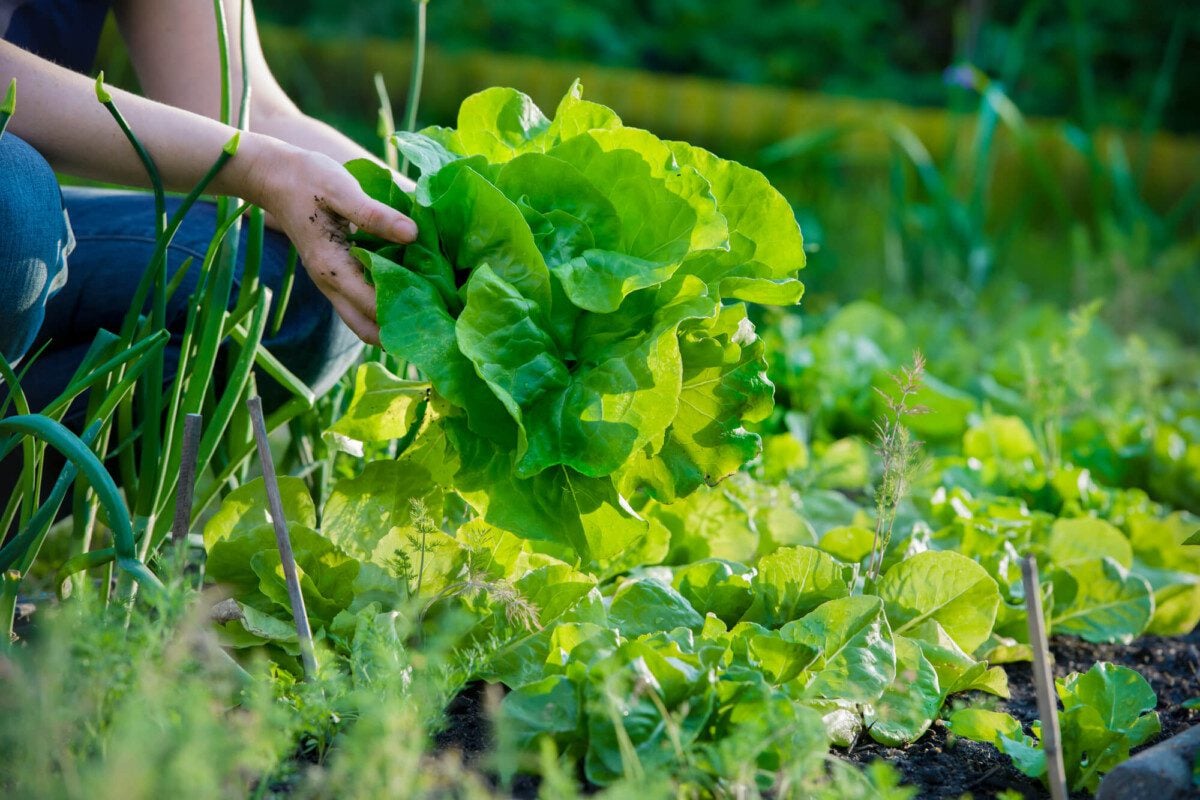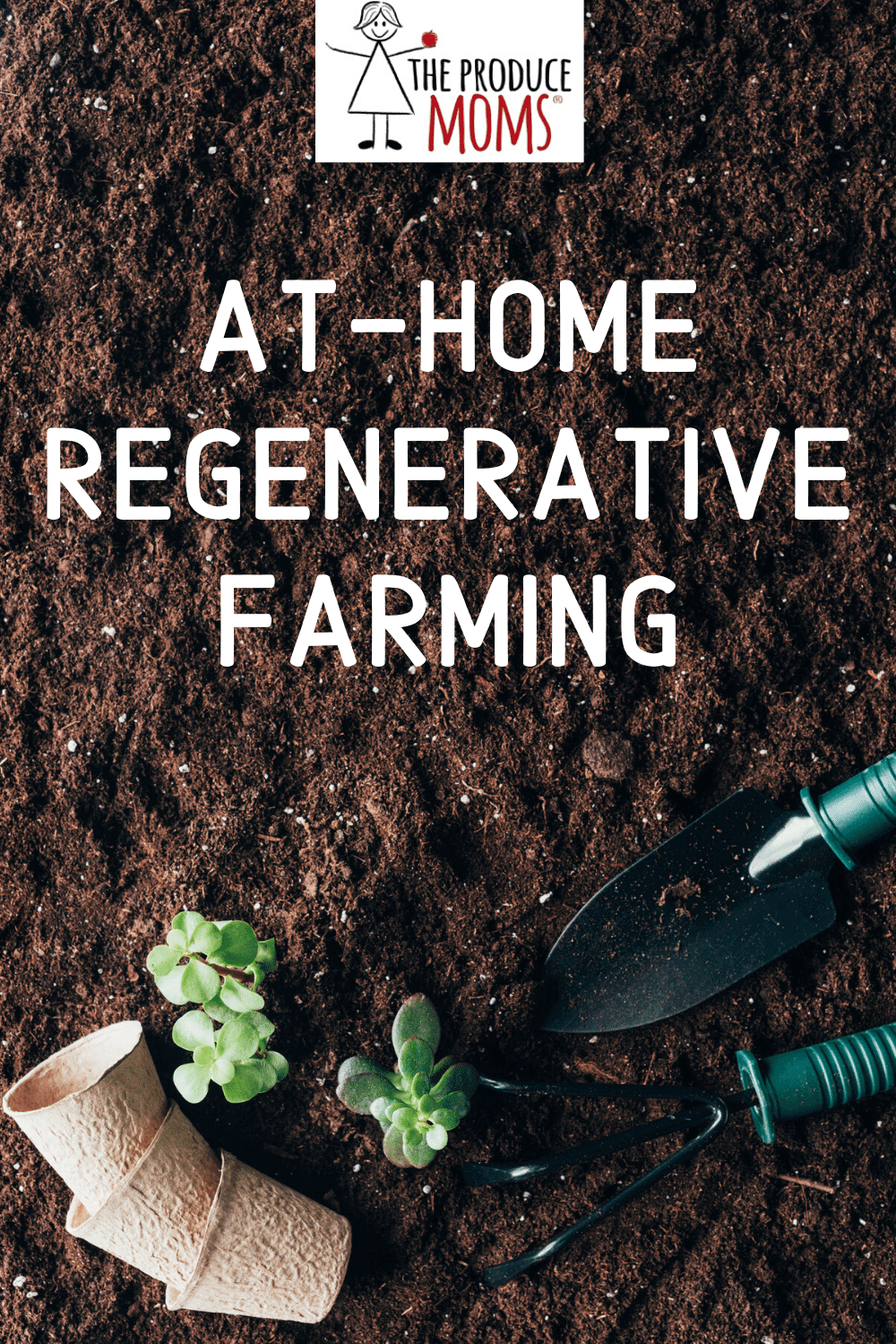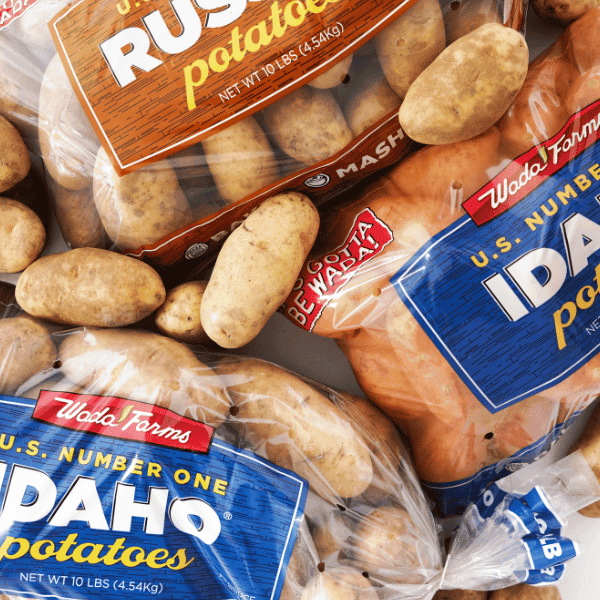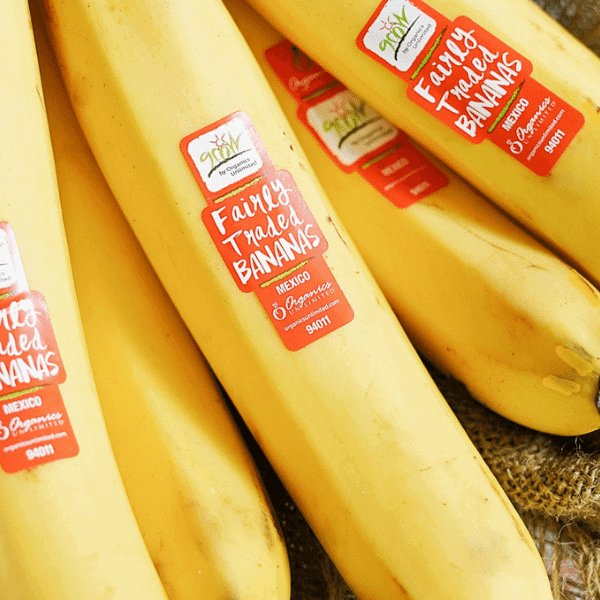At Home Regenerative Farming
Mar 19, 2020, Updated Apr 25, 2022

This post may contain affiliate links. Please read our disclosure policy.
In honor of National Nutrition Month®, we’ve partnered with the Produce for Better Health Foundation™ to promote sustainable eats as the best eats! It’s always a good idea to #HaveAPlant.
What you eat matters! With each bite, your food choices affect both your health and the environment. Growing a regenerative garden encourages healthy sustainable eating and helps prevent climate change.
What is Regenerative Farming?
Regenerative farming is a holistic approach to food production that implements sustainable growing practices to maximize soil fertility, support biodiversity, and produce highly nutritious crop yields. Regenerative farming also sequesters applaudable amounts of carbon dioxide from the atmosphere and holds it underground where it can benefit soil health instead of contributing to greenhouse gases.
A Healthier Harvest
A healthier growing environment equals a healthier harvest. Ecologically balanced, mineral-rich soil is the foundation of regenerative farming because enhanced soil health has a ripple effect. Nutrient-dense soils grow nutrient-dense crops and consumption of nutrient-dense crops promotes healthy bodies. Growing plants in biologically active soils increases desirable plant compounds for better plant health and ultimately improved consumer health.
Planting Goodness
The garden is an inspiring place, for adults and kids alike. The best way to connect with sustainable food choices is to plant them! Dig into a healthy lifestyle filled with aerobic exercise, nutritious eating, and environmental stewardship by planting a regenerative garden. Large-scale farmers and home gardeners alike can utilize regenerative farming practices to make a positive impact on the planet.
Consider these regenerative farming techniques when planning your home garden:
-
Add Compost
Regenerative farming aims to increase the organic matter in soils to improve soil quality and structure—which leads to an increased capacity for growing nutrient-dense crops. Incorporating composted materials and/or aged farm manures is a critical part of the soil building process.
-
Reduce Tillage
One thing regenerative farms have in common is a lack of tilling. Tilling soils temporally breaks up the soil but damages soil texture in the long run. When soil is left undisturbed beneficial microorganisms can establish and grow communities to better support plant health. Till with intention and only if absolutely necessary to incorporate organic matter amendments.
-
Plant Cover Crops
Cover crops are planted on fallow garden beds to increase soil fertility, reduce soil erosion, combat compacted soils, and prohibit weed seeds from entering bare soil. Common cover crops include grasses (wheat) and legumes (clover). Cover crops are usually incorporated into the soil before crops are planted to improve soil texture and fertility.
-
Resist Quick-Fixes
Resist using quick-fixes like synthetic fertilizers, herbicides, and pesticides to solve garden problems. Instead, work towards building a symbiotic growing environment that encourages supportive biodiversity.
-
Plant Perennials
Perennial plants like orchard fruits and nuts have an extensive root system that is able to store carbon deeper and more efficiently in soils. Since perennial plants are not re-planted each year they require minimal soil disturbances allowing soil microbes to populate and thrive.
To learn more about sustainable eats click here.
What are you planting in your garden this year? Will you be trying these regenerative farming techniques? Let us know in the comments below.







Thanks so much for this article. I have been learning to grow my own produce recently and only learnt about how to keep the soil healthy recently. I definitely will plant cover crops in places that I’ve left bare now and know I am doing something positive for our Earth.
How can one practice this on a balcony of an apartment? What’s the alternative to cover crops?
Thank you!
Brittany